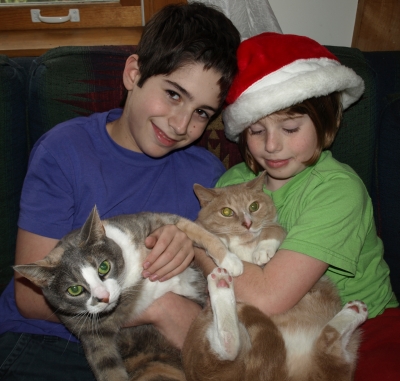By Lisa Jo Rudy, author of Get out, Explore, and Have Fun! How Families of Children with Autism or Asperger Syndrome Can Get the Most out of Community Activities

My son’s first word was “cat.” His best buddy to this day is his cat Dot, and his favorite recreational activity is bird watching. Tom is not at all unusual among people with autism: many, in fact, are more comfortable with animals than with people.
Perhaps the best known example of an autistic adult with a strong connection to animals is Temple Grandin, who is a leader in the humane management of cattle. But your child need not be a Ph.D. scientist to enjoy connecting with animals of all kinds.
If your child with autism is an animal fan, what’s the best way to help him pursue his interest in the community? Animals provide an entrée to number of activities and settings – and, depending upon your child, may even offer a chance to excel, volunteer, and develop the skills for a career.
A few possibilities include:
• Horseback riding. Hippotherapy or plain old riding lessons can open all kinds of doors for children with autism. Riding builds physical strength and balance, communication skills, and even social skills when riding is done in a group setting or as part of an equestrian team. Some people with autism become so engaged with their horse and stable that they volunteer and work for their local stable owner.
• Bird Watching. Alone or in a group, birdwatchers exercise their powers of observation, enjoy the natural world, and become part of a worldwide interest group. In the long run, bird watching can even lead toward a career as a naturalist, nature educator, conservationist or scientist.
• Animal Rescue Work. The SPCA and other animal rescue organizations are always looking for volunteer help. Children with autism can spend time with rescue animals, helping to socialize them or otherwise providing support to the rescue organization.
• Visiting Zoos, Aquariums and Nature Centers. While it can sometimes be tough to take a child with autism to a zoo or aquarium due to crowds and smells, nature centers are wide open and much less congested. Some kids, though (like my son) are so motivated by their interest in the animals that they’re able and willing to overlook crowds, heat and smells to spend time with their favorite critter.
• Animal Shows. Whether you’re watching elegant Lippizaner horses from Vienna or local livestock, it can be fascinating to spend time at an animal or pet show. Kids with autism may not be able to spend a great deal of time at a show, due to sensory or behavior issues, so starting with low-cost options is probably the best choice.
• Pet Stores. Every mall has a pet store, and every pet store has at least a few adorable critters to observe. Sometimes, pet store owners will even allow visitors to take a puppy into a small room where it’s possible to interact without risk to dog or child.
• Animal Planet and Animal Videos. While TV isn’t precisely a community event, your family room can provide a window on the world for your child with autism. Once he’s comfortable with and excited about what he’s seen on TV, he may be ready to take the next step into the community.
Whatever your child’s level of verbal ability or behavior, don’t pass by the possibilities provided by animals. Non-verbal children are as capable as anyone of establishing a positive relationship with an animal. Your child may well surprise you with her compassion, connection and willingness to build a relationship with a non-human friend.
Copyright © Jessica Kingsley Publishers 2010